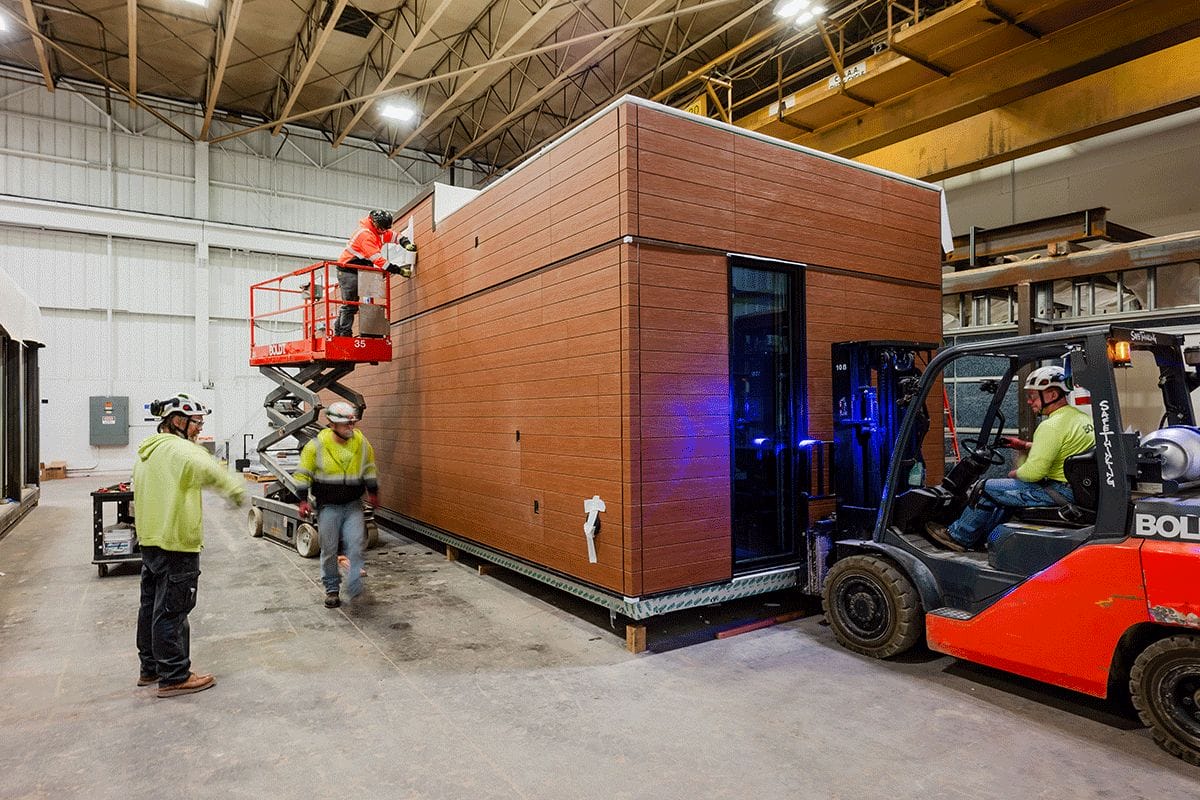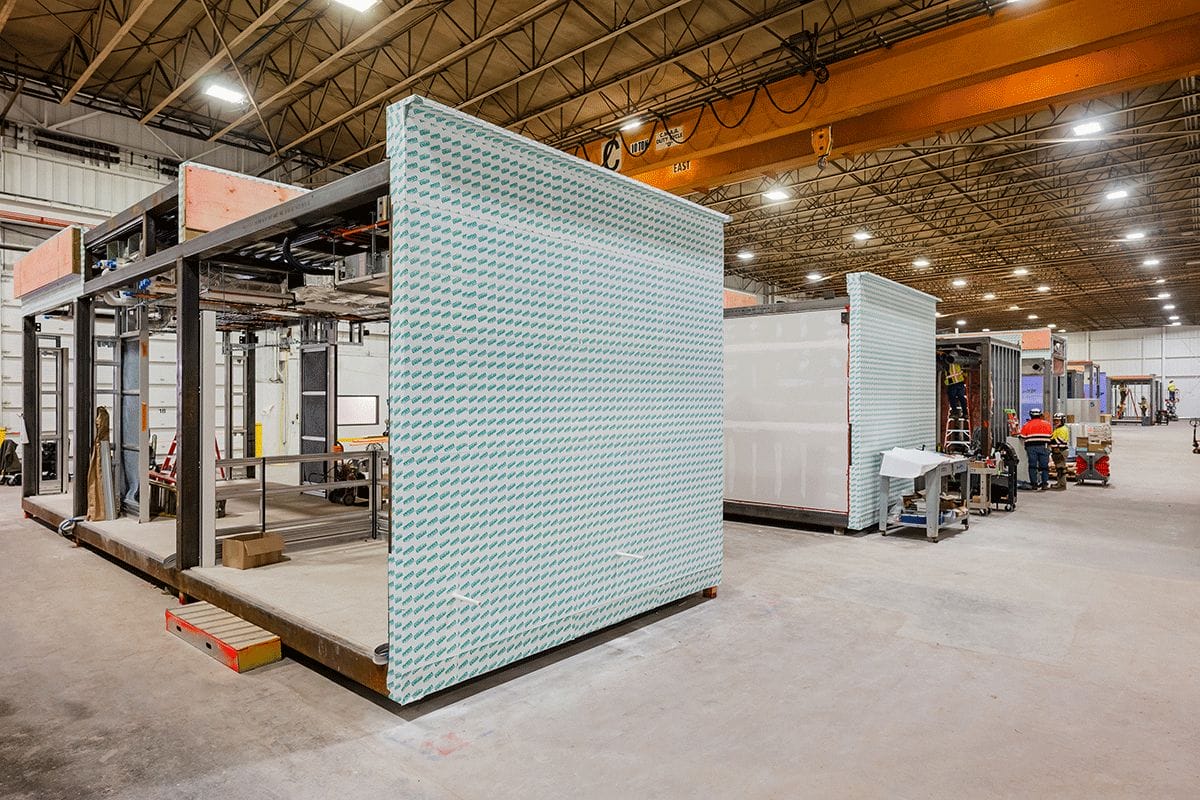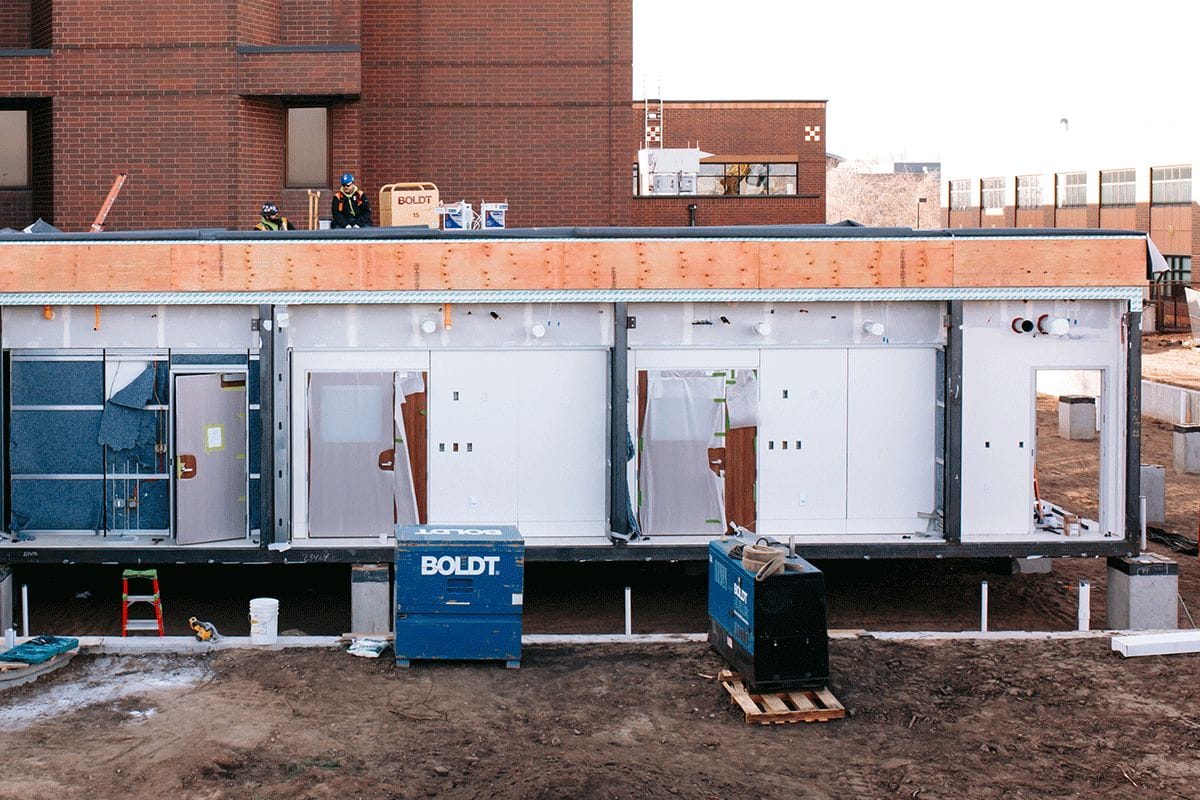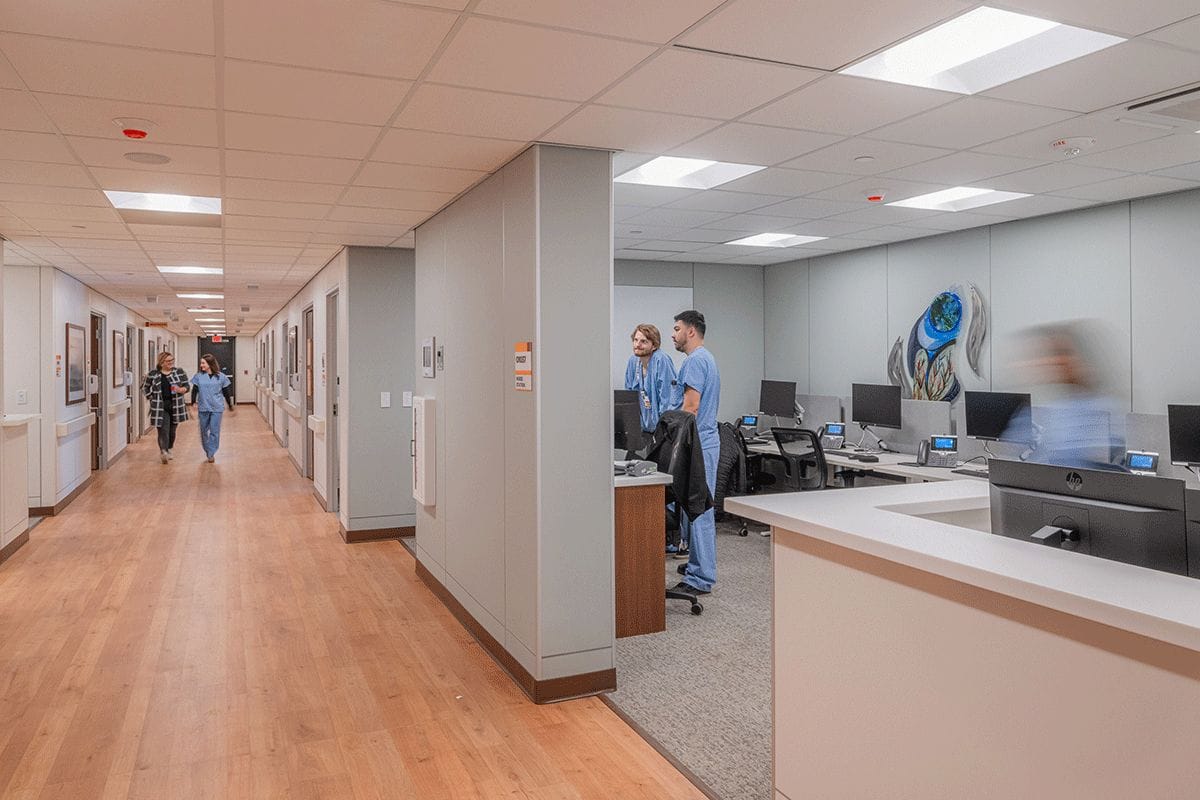STAAT MOD Patient Bed Expansion at M Health Fairview – St. John’s Hospital
Emergency Department (ED) and inpatient medicine teams at M Health Fairview St. John’s Hospital in Maplewood have tirelessly confronted this challenge, facing a 5 percent rise in inpatient visits and a staggering 12 percent increase in ED visits since 2022. With limited capacity and space, and a commitment to improve patient care while visits are only expected to grow, teams at St. John’s devised a strategy for improving patient flow by expanding the emergency department, reorganizing existing services, and — now — opening a new, purpose-built “short-stay and observation unit” to support newly developed workflows.
Construction firm The Boldt Company, and interdisciplinary design firm, HGA were engaged by St. John’s Hospital to deliver a 16-bed ICU patient observation wing onto the existing facility, built to over 90 percent completion offsite in Appleton, Wisc., then seamlessly transported and installed on the St. John’s campus – the first of its kind in the state of Minnesota. The fully structural volumetric modular building added 16 observation rooms, two staff support areas, patient bathrooms, staff toilet rooms, soiled and clean utility, equipment storage, medication room, nourishment alcove, P-Tube station, AHU mechanical yard and I.T., and water and electrical rooms.


“In the face of escalating patient visits, our ED and inpatient medicine teams have been proactive and innovative in their response,” said Will Nicholson, MD, vice president of medical affairs for M Health Fairview St. John’s, Woodwinds, and Bethesda hospitals. “This approach is a game-changer. It allows us to rapidly develop the needed space without impeding current operations.”

Construction of the unit began offsite in September. Crews delivered the prefabricated unit to St. John’s in late November, and teams completed final construction and furnishing, opening the addition to patients in mid-January.“We’re facing a very real need for patient bed space in our country right now.” said David Thomack, chief operating officer with Boldt. “Every day that is spent in planning, design, or construction is another day that hospitals and patients must do without those beds. Using a modular approach, we’re delivering that space in half the time traditional construction would take, without sacrificing durability, quality, or affordability, allowing healthcare providers to see patients months sooner.”This project represents the latest iteration of Boldt and HGA’s award-winning STAAT MOD product. Originally designed to help healthcare providers meet surging demand due to the COVID-19 pandemic, STAAT MOD has evolved beyond its initial temporary design, into a permanent, high-quality, and aesthetically pleasing modular healthcare solution.
More from Modular Advantage
Resia: Breaking All the Rules
Resia Manufacturing, a division of U.S.-based Resia, is now offering prefabricated bathroom and kitchen components to industry partners. Its hybrid fabrication facility produces more precise bathroom and kitchen components (modules) faster and at lower cost than traditional construction. Here’s how Resia Manufacturing does it.
How LINQ Modular Innovates to Bring Modular To The Market in the UAE and Beyond
LINQ Modular, with an office and three manufacturing facilities in Dubai, is a modular firm based in United Arab Emirates. The company is on a mission: to break open the housing and construction markets in the Gulf Cooperation Council (GCC) area with modular.
ModMax: Redefining Modular Construction with Confidence and Precision
ModMax was born out of frustration—frustration with five persistent pain points in modular construction: Permitting bottlenecks. Production delays. Rigid designs. Disconnect between “the office” and the field. Lack of transparency and communication.
LifeArk: Disaster-Resilient Housing from Recycled Plastic and 100-year-old Technology
Wee compares LifeArk’s housing units to Yeti coolers, as they are built similarly. Each component takes 15 to 20 minutes to manufacture, has an R-value of 40, and includes molded slots and chases for wiring, plumbing, fire sprinklers, and other utilities.
Building the Future of Modular Edge Infrastructure
The edge data center market is expanding rapidly, driven by the surge in AI workloads, IoT adoption, and the need for localized compute power. In these environments, sustainability, scalability, and reliability are non-negotiable. Cooling is among the most complex challenges for operators—and one of the most decisive factors in long-term success.
Accelerating Light-Gauge Steel Construction: A Semi-Automated Digital Workflow for Off-Site Projects
For construction professionals, the message is clear. By adopting semi-automation and digitalization, companies can deliver projects faster, more accurately, and more profitably, while also building stronger collaboration across teams. The approach is not about replacing people with machines, but about empowering people with better tools and processes.
Why Modular Data Centers Are Gaining Momentum
Artificial intelligence, high-performance computing, and edge applications push the limits of traditional “stick-built” data centers. They take years build, often struggle with high density workloads, and aren’t optimized for deployments near end users. Modular data center platforms are purpose-built to address these challenges, offering flexibility and scalability to adapt to evolving technologies, while opening new opportunities for the modular construction industry.
Supply Chain Innovation in Action: 5 Habits Every Modular Leader Should Practice
By applying these principles to supply chain practices — collaborative planning, strategic procurement, scenario modeling, digital tools, and transparent forecasting — construction leaders can build value chains that are not just efficient and agile, but truly innovative.
Exploring the Role of Modular Integrated Construction (MiC) in Advancing Circular City Principles – A Survey of Stakeholder Perspectives
The survey findings highlight the significant potential of Modular integrated Construction (MiC) in advancing the development of circular cities. By reducing costs, accelerating construction timelines, and minimizing waste generation, MiC offers a promising approach to sustainable urban development.
The Use of MS POLYMER™-Based Sealants and Adhesives in Modular Building
These products combine flexibility and elastic recovery with excellent adhesion to different substrates and have already shown their usefulness in traditional construction. Now it’s time for them to be put to use in the modular construction industry.












